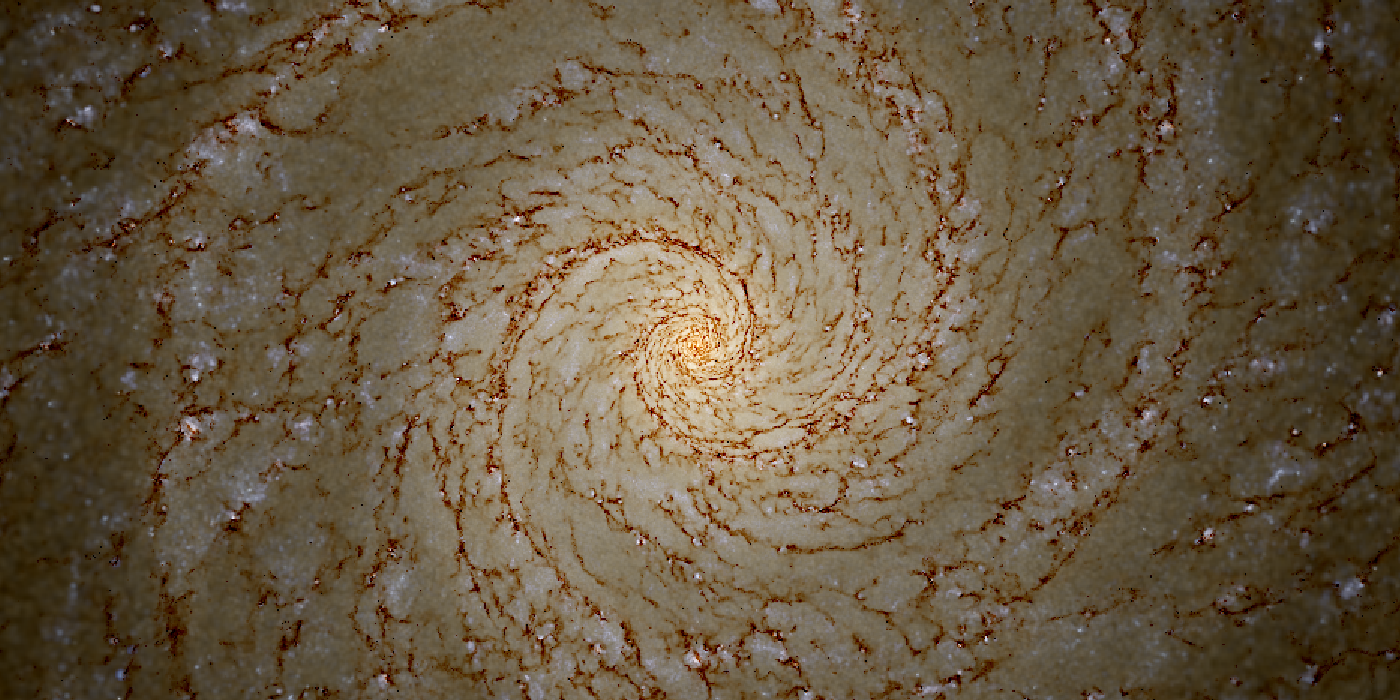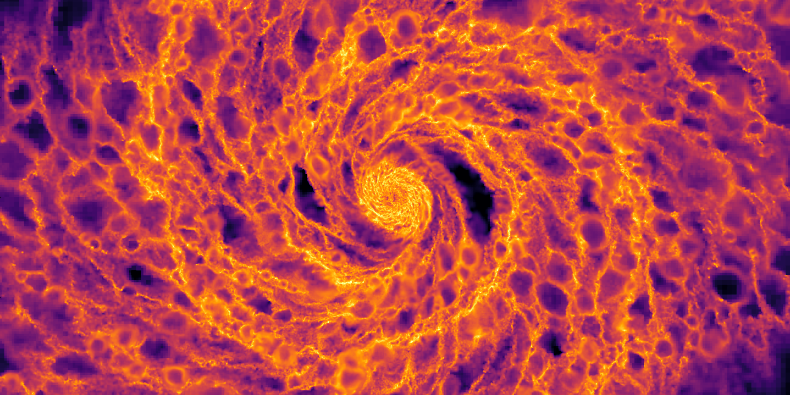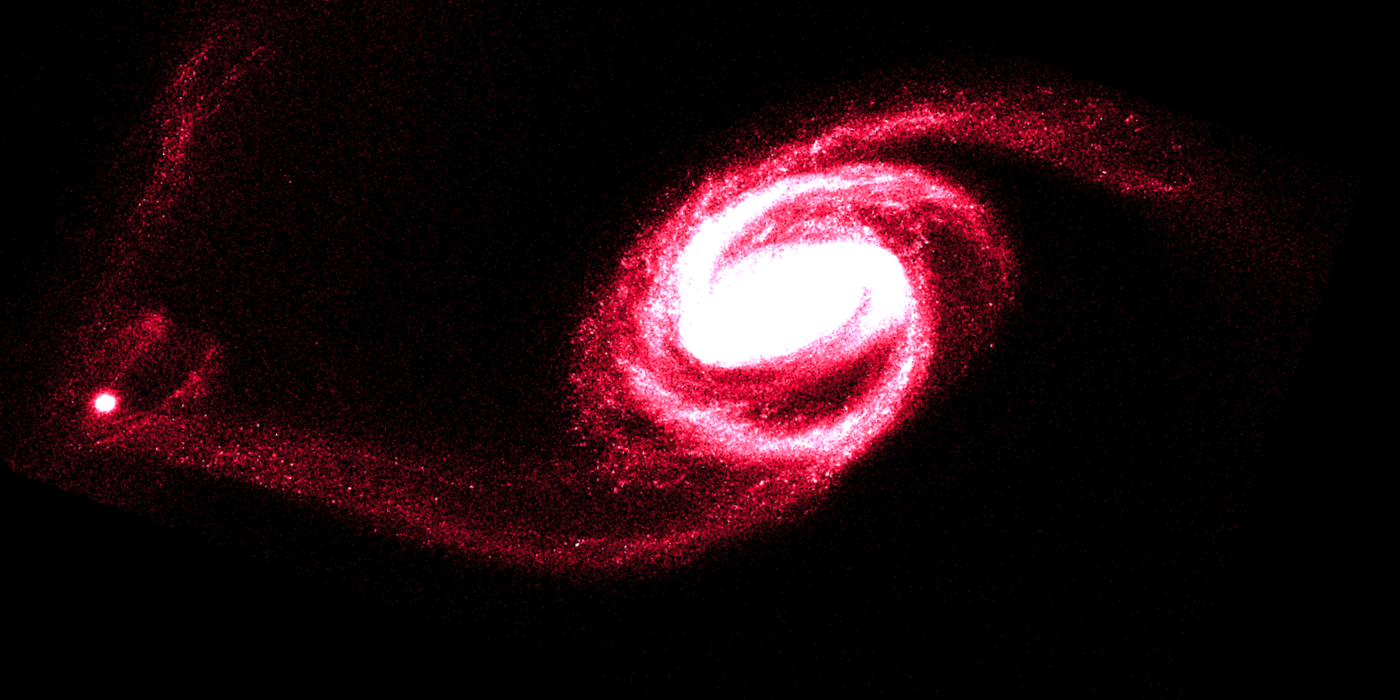We at Hokkaido University's cosmoscience department specialise in all things out-of-this world!
As the theoretical branch of Hokkaido University's astrophysics department, we study some of the largest and most exotic structures in the known universe.
From dark matter to stellar nurseries, and galaxies to supernova, we aim to better understand what shapes and governs the fundamental processes of the cosmos.
-
 Simulation of a spiral galaxyImage of the simulated starlight from a galaxy simulation where a two-armed spiral has been formed. The gas and dust that births the new generation of stars can be seen by the dark bands that block out the starlight.
Simulation of a spiral galaxyImage of the simulated starlight from a galaxy simulation where a two-armed spiral has been formed. The gas and dust that births the new generation of stars can be seen by the dark bands that block out the starlight. -
 Colliding molecular cloudsCollisions of molecular clouds can lead to the formation of massive molecular cores and high-mass star formation. The image shows a simulation of two colliding molecular clouds including the effect of magnetic fields both before (left) and after contact (right, star formation coloured yellow).
Colliding molecular cloudsCollisions of molecular clouds can lead to the formation of massive molecular cores and high-mass star formation. The image shows a simulation of two colliding molecular clouds including the effect of magnetic fields both before (left) and after contact (right, star formation coloured yellow). -
 Gas within a barred galaxyMany galaxies show long inner bar features in addition to spiral structure. How these structures impact the interstellar gas and star formation within is a standing mystery, and one that be investigated by studying a simulated galaxy similar to what we see in nature.
Gas within a barred galaxyMany galaxies show long inner bar features in addition to spiral structure. How these structures impact the interstellar gas and star formation within is a standing mystery, and one that be investigated by studying a simulated galaxy similar to what we see in nature. -
 Two interacting galaxiesA galaxy would often pass by many neighbouring galaxies throughout its lifetime. As it does so the immense gravitational forces each galaxy exerts upon each other causes wide-scale changes in their structure. This image shows the stellar material of a Milky Way sized galaxy after a much smaller galaxy flies-by (bottom left).
Two interacting galaxiesA galaxy would often pass by many neighbouring galaxies throughout its lifetime. As it does so the immense gravitational forces each galaxy exerts upon each other causes wide-scale changes in their structure. This image shows the stellar material of a Milky Way sized galaxy after a much smaller galaxy flies-by (bottom left).
